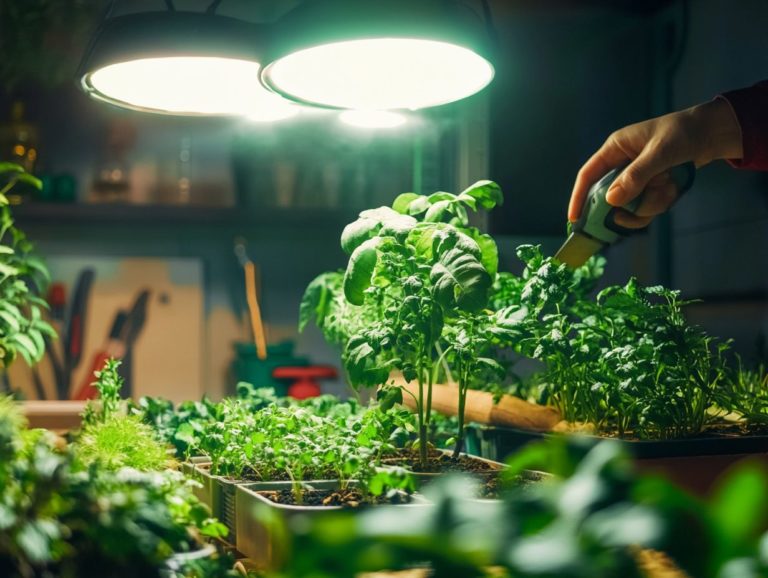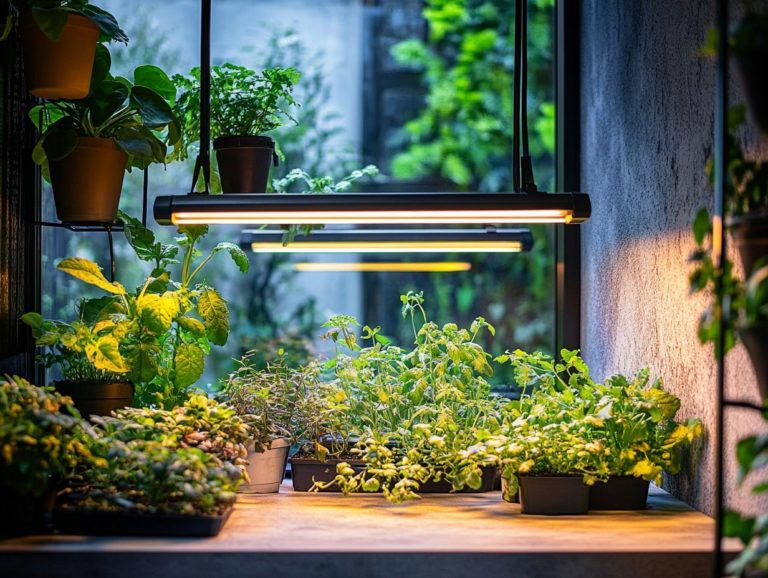Understanding the Impact of Light Quality
Light quality is an essential yet often overlooked element of your environment. It profoundly influences both your well-being and the vitality of plants around you.
From the comforting warmth of sunlight to the soft glow of artificial bulbs, the characteristics of light its wavelength, intensity, and color play significant roles in shaping your physical and psychological health. This includes your body’s natural sleep-wake cycle as well as the growth and development of the plants you care for.
This exploration delves into what light quality truly entails, how you can measure it, and the various factors that impact it. You ll also discover methods to enhance light quality, including the use of LED grow lights and phototron treatments. Additionally, you’ll find tips for choosing the most suitable light sources for your specific needs. Whether you re a dedicated plant enthusiast or simply curious, this topic promises to illuminate your understanding.
Contents
- Key Takeaways:
- Understanding the Importance of Light Quality
- The Effects of Light Quality on Humans
- The Impact of Light Quality on Plants
- Factors that Affect Light Quality
- Improving Light Quality
- Considerations for Choosing Light Sources
- Frequently Asked Questions
- What is the impact of light quality on human health?
- How does light quality affect plant growth?
- Can light quality impact our productivity in the workplace?
- What are the different types of light quality and their effects?
- Is there a recommended light quality for different tasks or activities?
- How can we improve light quality in our daily lives?
Key Takeaways:
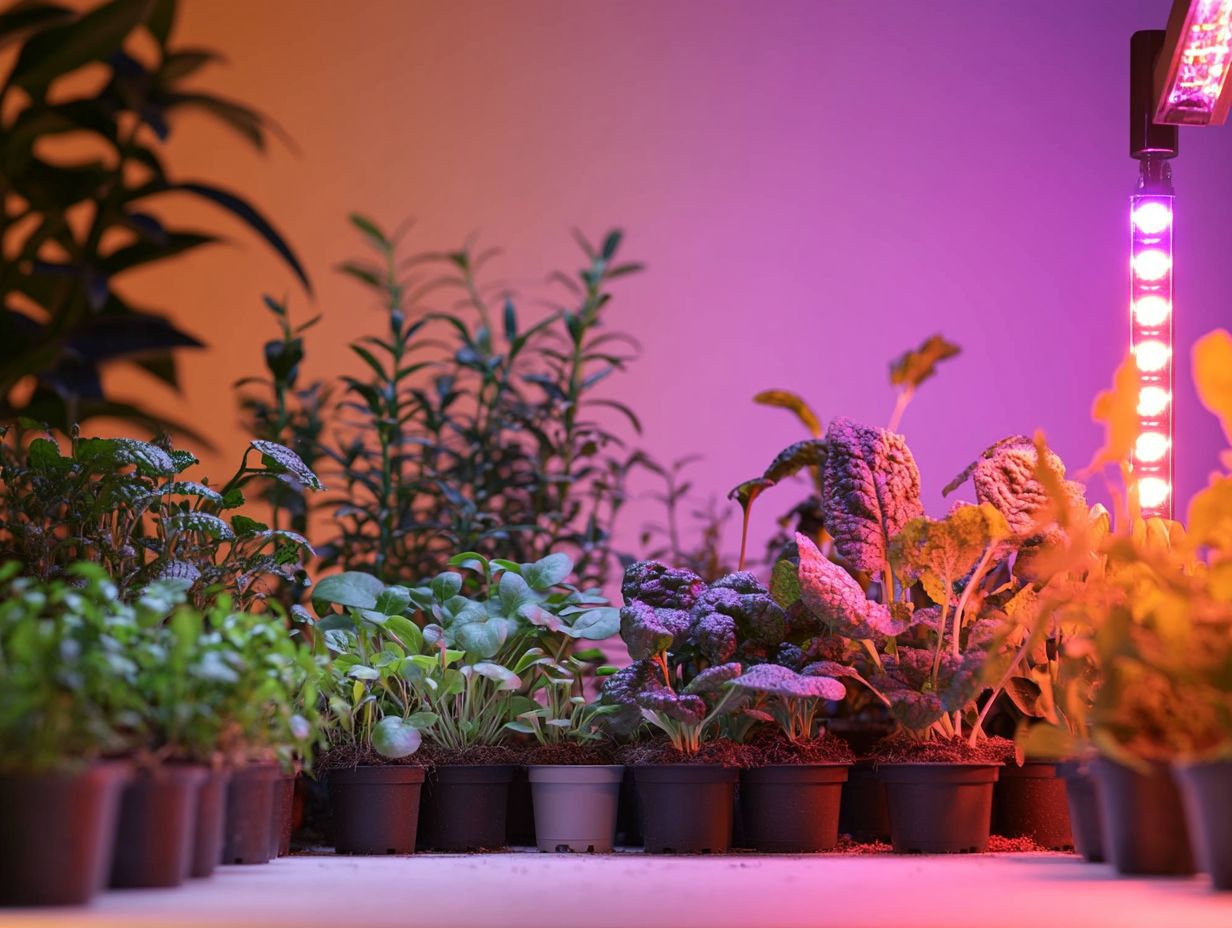
Light quality affects your mood and energy levels.
Choosing the right light can enhance your plant’s growth and health.
Factors like color temperature, spectrum, and intensity are crucial for optimizing light quality for both humans and plants.
Understanding the Importance of Light Quality
Light quality encompasses the spectral distribution of light and its significant influence on various biological processes. Grasping the nuances of light quality is crucial in several fields, especially horticulture. This area directly impacts plant growth, photosynthesis, and chlorophyll content.
Different light wavelengths, such as blue and red light, serve unique roles in plant physiological responses. Artificial light sources like LED grow lights can be tailored for specific plant species. This optimization enhances biomass allocation and overall growth rates.
Defining and Measuring Light Quality
To define and measure light quality, you ll need to evaluate various parameters, such as light intensity and spectral distribution, along with their effects on both plants and other organisms.
By utilizing advanced tools like spectrometers and quantum sensors, you can analyze how different wavelengths of light influence crucial processes, including photosynthesis. Measuring these light characteristics allows you to optimize growing conditions, ensuring that plants receive the ideal light spectrum for maximum growth and health.
This understanding is especially crucial in controlled environments like greenhouses. Insight into light quality can significantly enhance crop yield and quality. Accurate measurements empower you to mitigate diseases and stress in plants, highlighting the essential role that light quality plays in achieving agricultural sustainability.
The Effects of Light Quality on Humans
Light quality plays a crucial role in your health. It impacts your circadian rhythm, melatonin production, and overall well-being.
When you expose yourself to certain types of light especially blue light from screens and artificial sources you may find it linked to sleep disorders and disruptions in your natural biological clock.
Research from esteemed organizations like the American Medical Association highlights the necessity of managing light quality. This is crucial for reducing the risks tied to prolonged exposure to artificial light, particularly for individuals vulnerable to conditions such as Alzheimer s disease.
Embrace the power of light quality and watch your plants thrive while boosting your well-being!
Physical and Psychological Effects
Extensive studies have illuminated both the physical and psychological effects of light quality. Blue light can significantly disrupt your body s natural sleep cycle, ultimately impacting your sleep quality and mental health.
When artificial lighting alters the natural cycle of day and night, particularly during those crucial evening hours, your body’s melatonin production a hormone essential for regulating sleep can be suppressed. This disruption can lead to sleep disorders like insomnia and can also contribute to heightened feelings of anxiety and depression.
Insufficient sleep may further impair cognitive functions, including memory, attention, and decision-making. Recognizing these intricate connections underscores the importance of managing your light exposure. By doing so, you can protect not only your physical well-being but also bolster your psychological resilience.
The Impact of Light Quality on Plants
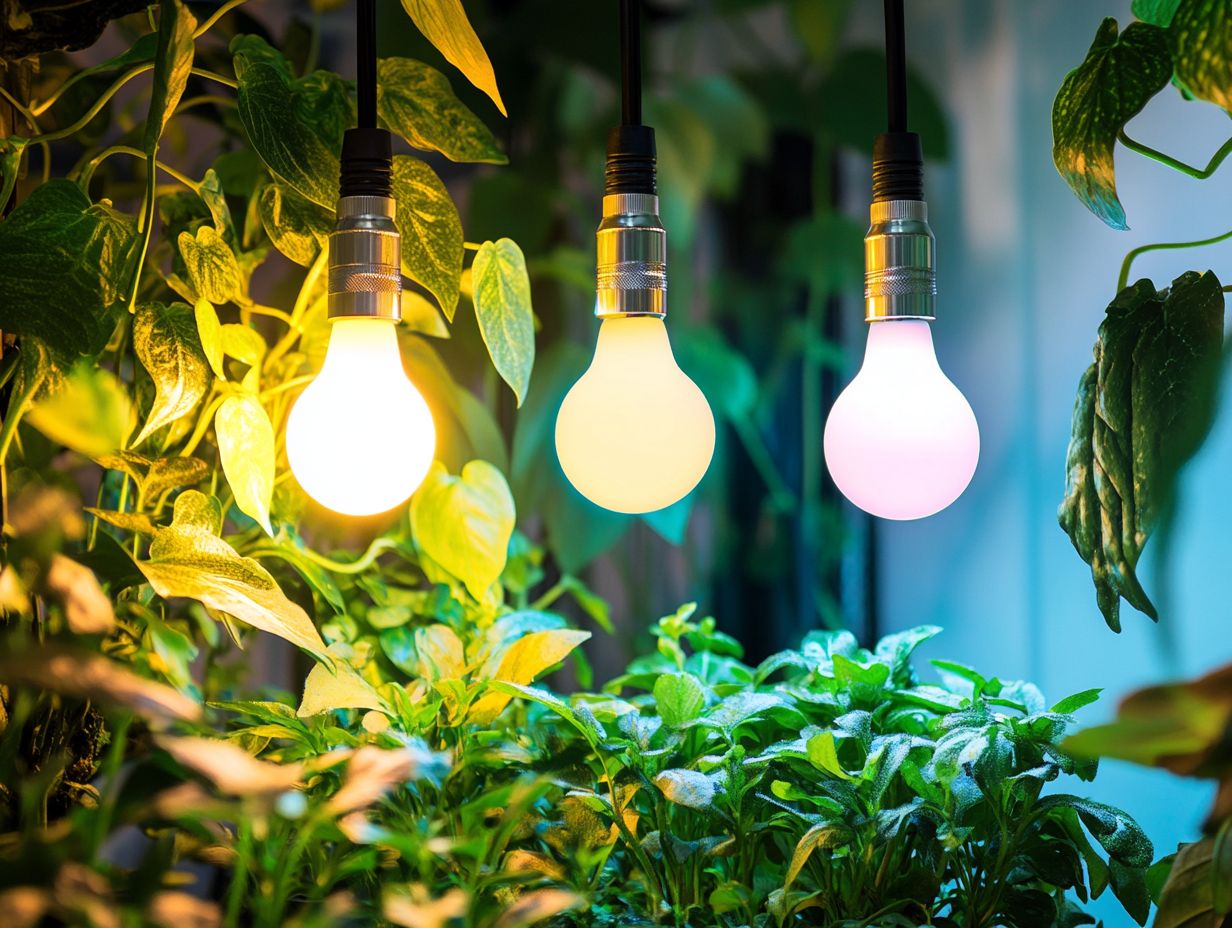
The impact of light quality on plants is profound. It shapes their growth, development, and overall health. Different wavelengths of light are absorbed by chlorophyll, significantly influencing photosynthesis rates, which directly affect biomass allocation across various plant species.
LED grow lights have emerged as a favored solution for optimizing light quality. They offer you precise control over photoperiod and light intensity, ultimately enhancing growth in controlled environments.
Growth and Development of Plants
The growth and development of your plants are deeply intertwined with light quality. This is especially true during the critical processes of photosynthesis and chlorophyll content, which together govern biomass allocation.
The spectrum of light your plants receive directly influences their physiological responses. Specific wavelengths promote optimal growth rates and overall vitality. For instance, blue light enhances leaf development, while red light is essential during the flowering and fruiting stages.
Research indicates that light intensity plays a significant role in photosynthetic efficiency. Too much or too little can impede growth. You can see this understanding in action in controlled environments like greenhouses, where artificial lighting systems are meticulously designed to deliver specific light qualities that cater to the needs of various species. This maximizes productivity and health.
Factors that Affect Light Quality
Factors influencing light quality can be broadly categorized into natural and artificial sources. These elements play a crucial role in shaping the spectral distribution and intensity of light that ultimately reaches both plants and humans.
Natural and Artificial Sources
Natural light sources, primarily sunlight, offer the most effective spectrum for photosynthesis. You can also consider artificial light sources like LED, incandescent lamps, and high-pressure sodium lamps for controlled growth.
Sunlight not only facilitates the efficient conversion of light energy into chemical energy but also influences various plant behaviors, such as flowering and leaf orientation, due to its changing intensity and quality throughout the day.
Meanwhile, although artificial light can be customized to emit specific wavelengths, its effectiveness may be hampered by factors like heat output and energy consumption.
Natural light does wonders for your well-being! It helps regulate your circadian rhythms, boosting mood and productivity. In contrast, over-reliance on artificial light can lead to sleep disturbances and eye strain. It’s crucial to balance both light sources for optimal growth and well-being.
Improving Light Quality
Enhancing light quality is crucial for fostering optimal plant growth and promoting human health. You can achieve this through various methods, such as utilizing LED grow lights and exploring phototron treatments.
Methods for Enhancing Light Quality
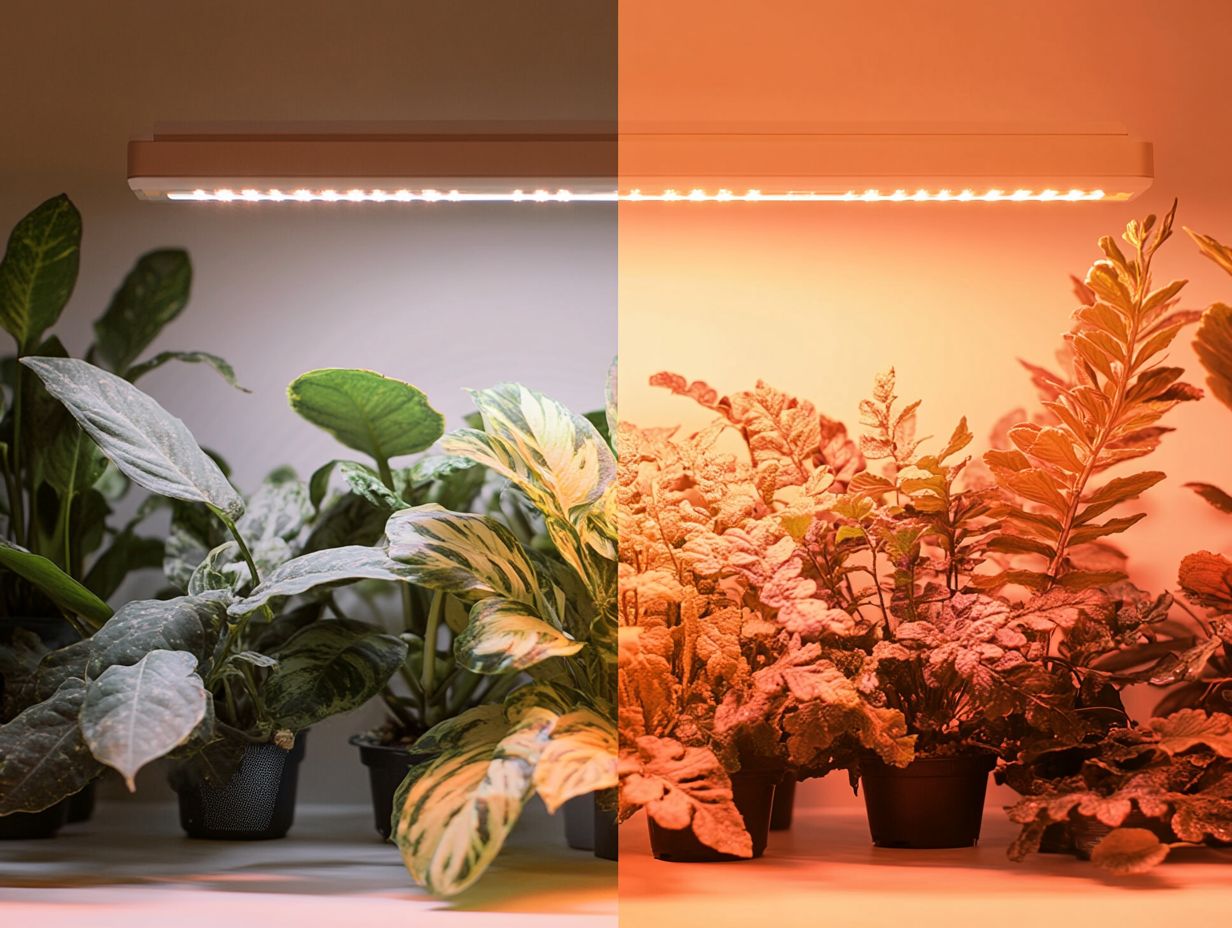
To enhance light quality, focus on optimizing light intensity and duration while using LED grow lights that allow for adjustable spectral distribution tailored to the specific needs of your plants.
In both agricultural and indoor settings, these advanced technologies can significantly boost plant growth and yield. For example, consider a case study from a California greenhouse that implemented a blend of full-spectrum LED lights and smart sensors. This innovative approach enabled real-time adjustments to light conditions based on the growth stages of the plants, ultimately resulting in a remarkable 30% increase in crop yields compared to traditional lighting methods.
By integrating light control systems with automated shading solutions, you can ensure that your plants receive consistent lighting throughout the day. This not only reduces energy waste but also promotes healthy growth. These technologies show the power of intelligent lighting in creating optimal growing conditions.
Considerations for Choosing Light Sources
When selecting light sources, it s crucial to consider various factors that enhance light quality. This means evaluating light intensity and understanding the needs of different plant species. Also, know the types of man-made light available.
By paying attention to these elements, you can create an ideal environment for your plants to thrive.
Factors to Consider for Optimal Light Quality
To achieve optimal light quality, consider several factors, including the spectral distribution of light, light intensity, and the specific needs of various plant species.
These elements not only interact but also adapt to the unique requirements of different growth environments be it indoor spaces, greenhouses, or outdoor gardens. For example, understanding how different wavelengths promote photosynthesis can help you select lighting solutions tailored for plants that thrive in shaded areas compared to those that bask in full sun.
By adjusting light intensity, you can effectively manage growth patterns and encourage flowering, ensuring that each species receives the precise amount of energy necessary for its development and overall health.
Frequently Asked Questions
Curious about how light quality impacts our lives? Here are some common questions:
What is the impact of light quality on human health?
Light quality plays a crucial role in regulating our biological clock, known as the circadian rhythm. This natural process regulates the sleep-wake cycle, affecting our sleep patterns, mood, and overall well-being.
How does light quality affect plant growth?
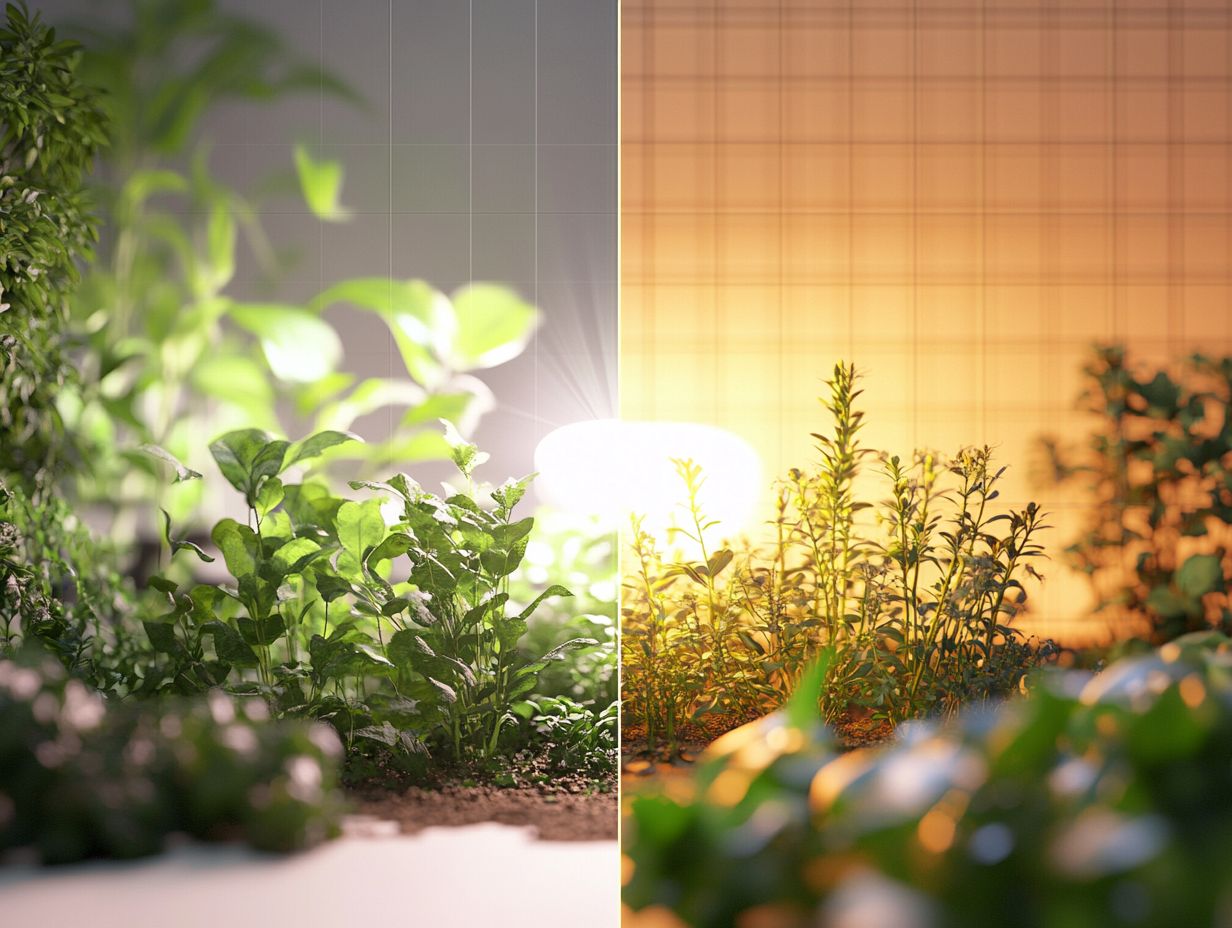
The spectrum of light influences a plant’s growth and development, as different wavelengths stimulate different physiological processes such as photosynthesis and flowering.
Can light quality impact our productivity in the workplace?
Yes! Studies have shown that exposure to natural light or high-quality lighting can improve concentration, alertness, and overall productivity in work environments.
What are the different types of light quality and their effects?
The main types of light quality are natural light, artificial light, and full-spectrum light. Each type has varying effects on our health, mood, and visual perception.
Is there a recommended light quality for different tasks or activities?
Yes! The type and quality of light needed can vary depending on the task or activity. For example, warm, dim lighting is more suitable for relaxation, while bright, cool lighting is better for tasks that require focus and attention.
How can we improve light quality in our daily lives?
Some ways to improve light quality include using full-spectrum light bulbs, incorporating natural light into our indoor spaces, and adjusting the color temperature of our devices to reduce eye strain. Try full-spectrum bulbs today!



